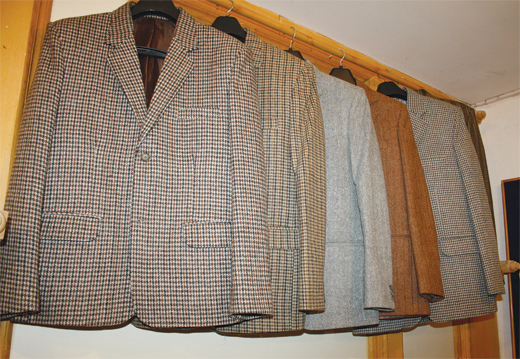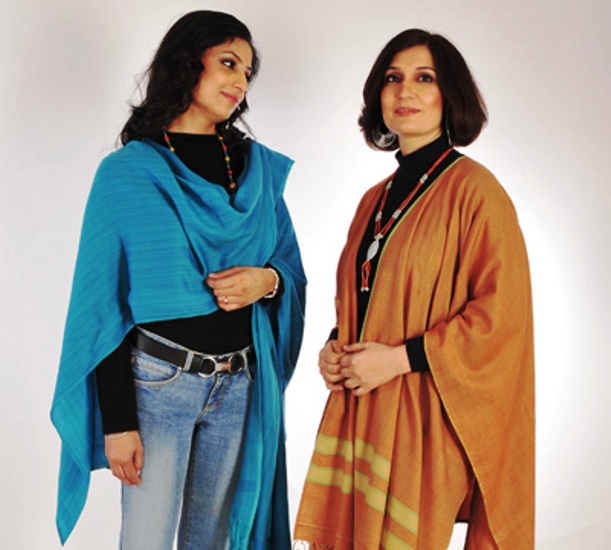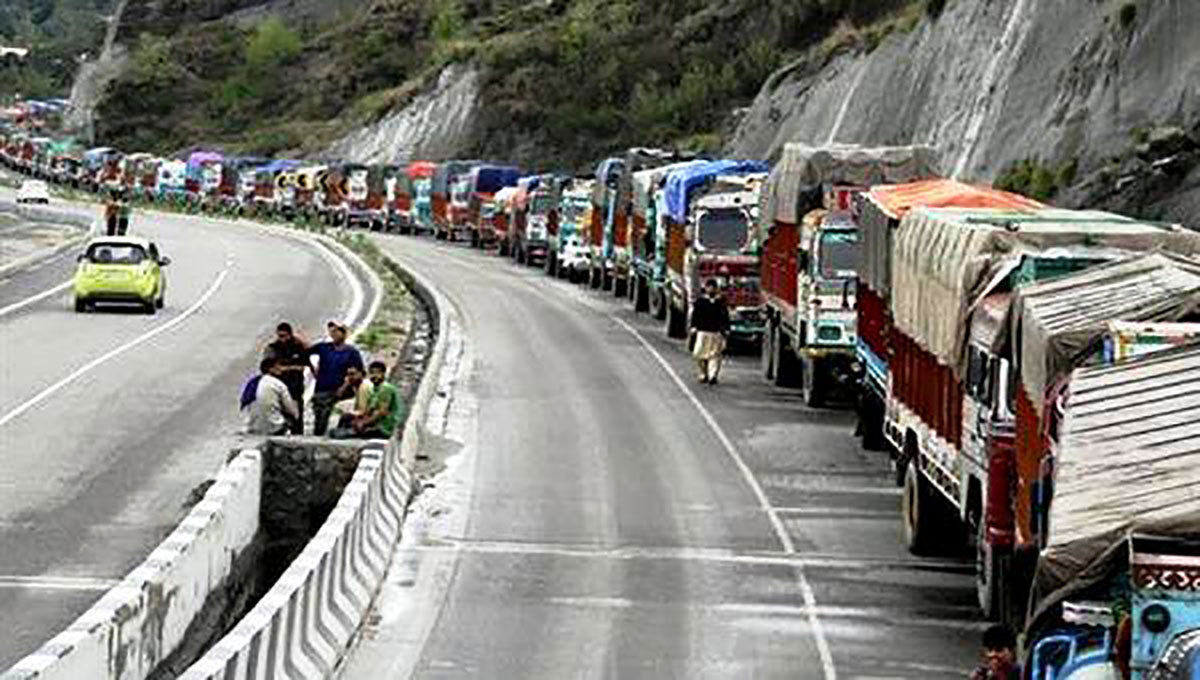The Scottish have promoted and protected Harris Tweed, and made it the most sought after tweed in world. While Kashmir Tweed matches its European counterpart in quality, lack of promotion and protection has kept it a distant contender. Haroon Mirani reports
In spite of its quality, Kashmir Tweed is unable to get its due place in the high-end global market. Experts say lack of branding and government support is hindering the fabric from challenging the monopoly of its Scottish cousin – the most sought after Harris Tweed.
The handmade Harris Tweed from Scotland secures orders worth millions of dollars each year. The Kashmiri Tweed, however, is little known despite matching the quality which was affirmed by global fabric giant Reid & Taylor. The company has procured 25000 meters of the fabric to be included in their kitty, along with Harris Tweed and intends to increase procurement in subsequent years. The price, however, is far below the Scottish version.
Tweed is a rough, unfinished woollen fabric, of a soft, open, flexible texture resembling homespun but more closely of woven type. Its manufacturing is an elaborate process involving at least eight steps from shearing the wool to finishing the final product.
Marketed as ‘Poshish’ by Jammu and Kashmir Handloom Development Corporation (JKHDC), the Kashmir tweed is priced at one-tenth of the Harris Tweed.
Though the procurement by Reid and Taylor comes as good news for Kashmir’s ailing tweed industry and JKHDC, finances for higher production are a constraint.
“Kashmir produced 50,000 meters of tweed in 2008 whereas our potential is more than 100,000 meters. Due to financial constraints, we are unable to work to our full potential,” said Ghulam Nabi Wani, Marketing Officer, Jammu Kashmir Handicrafts Development Corporation (JKHDC).
The turnaround in tweed exports came in 2008 when the corporation approached J&K Bank Chairman Haseeb Drabu, then economic advisor to the government, to seek advice on the sorry state of tweed industry.
“Drabu talked to Reid & Taylor and persuaded them to visit Kashmir to have a look at the tweed produced here. They came and took a sample of around 4000 meters with them in 2008,” said Wani.
The quality of tweed clicked with Reid & Taylor and the fabric giant are now seeking up to 25,000 meters, amounting to around half of total tweed production in the state.
The JKHDC with its employees without salary for the last several months sees a ray of hope. The handloom sector involves 51,847 weavers with 18,154 units spread across J&K.
Kashmir tweed was a regular at the European markets up to World War II along with other Kashmiri handicrafts. The war changed the story and Kashmir tweed had since gone into a slumber.
Despite the aura of brand Kashmir, the government has hardly been able to promote tweed, while Harris Tweed raced ahead with strong branding and legislative support from their government.
Harris Tweed became a major success for Scotland after famous designer Vivienne Westwood started using the cloth in her catwalk collections in the mid-1980s. Since then, leading names in fashion including Ralph Lauren, Paul Smith and Alexander McQueen have all fallen for the fabric, traditionally used to make country jackets for men.
It has a celebrity following that includes Madonna and Gwyneth Paltrow, and top designers Vivienne Westwood, Valentino and Donna Karan have featured it in the winter collections.
Scottish designer Deryck Walker has also been working with Harris Tweed recently, using it for his fashion shows at the 100% Tokyo Design exhibition last year. He also took his Harris Tweed collection to Paris in January. Harris Tweed has also been used successfully in footwear by the likes of Westwood, Ralph Lauren and Calvin Klein.
The Orb Mark, Britain’s oldest surviving Certification Mark, is the mark of given by the Harris Tweed Authority to every metre of a true Harris tweed cloth.

This Harris Tweed trademark – registered in over 30 countries – was substantially bolstered by the 1993 Harris Tweed Act. The Act strengthened existing protection for Harris Tweed by giving the definition of Harris Tweed a firm legal basis. The Harris Tweed Authority was also established as the successor to the Harris Tweed Association of 1906, its purpose being “to promote and maintain the authenticity, standard and reputation of Harris Tweed; for preventing the sale as Harris Tweed of material which does not fall within the definition…”
Kashmir has a similar climate to Scotland that is necessary for rearing such sheep for producing wool for genuine tweed. But the conditions here have not been made conducive for pitching the tweed as a special brand. The government has been indifferent and weavers have few resources to do anything. The business houses have been limited to make their own quick profits without caring for the future generations.
On the other hand, Scottish Harris Tweed has a written history spanning from 1830. As part of their brand placement, the westerners dig out the history and weave stories of human interest around it. With a good quality product, a written history spanning hundreds of years and interesting human angle stories of discovery, what else does a product need to acquire legendary status.
Kashmiri tweed has not had these privileges of patronage or promotion. Experts, however, see great potential for Kashmir tweed in the world market.
Ironically, it is the global recession that can prove to be a blessing for the industry. The Harris Tweed industry of Scotland is on free fall, with production going from seven million metres a decade ago to one million a year ago and little more than 100,000 metres this year.
Recently Scotland’s largest Harris Tweed manufacturing industry Kenneth Mackenzie mill, which once produced 95 per cent of all Harris Tweed, was shut down.
Meanwhile in Kashmir, the tweed industry has got a lease of life after the Reid & Taylor order.
Even as the cost of Harris tweed has come down to GBP 16 from as high as 25 pounds, but it is still high as compared to Kashmir tweed which comes at around GBP 4.
Kashmir tweed can give a stiff competition to Harris Tweed in the world market.
But the Harris Tweed promoters are striving to save their industry; Kashmiris are indifferent to their product.
Recently fashion designers showcased creations made from Harris Tweed at an event aiming to spark fresh interest in this traditional cloth. They are continuing to “push boundaries” with the cloth and are collaborating with designers to promote new uses for it.
As part of this promotion UK singer, Alyth McComack wore Harris tweed at her wedding. Scotland’s Western Isles Council has also set up a 300,000 Pound fund to finance production of the most popular tweed patterns in quieter periods in the hope of allowing mills to work all year.
Scotland exports Harris Tweed to 30 countries. Kashmir tweed can encroach on this huge market if the only government goes for some aggressive marketing.
















